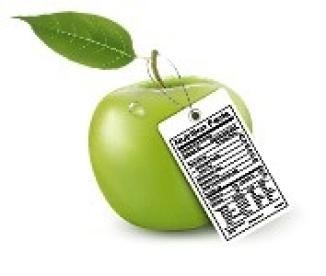With Congress’s freshly enacted GMO labeling bill, the devil is in the implementing details.
On July 29, US President Barack Obama signed legislation that establishes a national disclosure requirement for identifying bioengineered foods and food ingredients, known colloquially as “GMO” (genetically modified organism) or “GE” (genetically engineered) foods and that gives food companies alternatives for how to disclose the information.[1] Critically, the law preempts any state-level genetically modified labeling requirements—including Vermont’s Law 120 that took effect on July 1—and requires the US Department of Agriculture’s (USDA’s) Agricultural Marketing Service (AMS) to issue implementing regulations.[2]
Who Will Be Affected?
The disclosure requirement will apply to foods subject to labeling requirements under the Federal Food, Drug, and Cosmetic Act (FD&C Act). The requirement will also apply to foods subject to labeling requirements under the Federal Meat Inspection Act, the Poultry Products Inspection Act, and the Egg Products Inspection Act if 1) the most predominant ingredient of the food would be independently subject to the labeling requirements under the FD&C Act (e.g., this would not apply to a pack of raw chicken breasts or steaks) or 2) the most predominant ingredient of the food is broth, stock, water, or a similar solution, and the second most predominant ingredient of the food would independently be subject to the labeling requirements under the FD&C Act (e.g., canned chicken soup).
Other Key Provisions
- The law contemplates regulations that will allow companies to choose from alternatives of how to disclose information concerning bioengineered food (including text on a package, a symbol, or a link to a website (e.g., QR code or similar technology)).
- In this context, the USDA must conduct a study to identify potential technological challenges that may affect whether consumers would have access to the bioengineering disclosure through electronic or digital disclosure methods.
- Small food manufacturers may be allowed to use websites or telephone numbers to satisfy disclosure requirements.
- Very small manufacturers and restaurants are exempt.
- States or other entities are immediately prohibited from mandating label requirements relating to whether a food is bioengineered or was developed or produced using bioengineering.
- Food certified under the National Organic Program may clearly display a “non-GMO” label in addition to the USDA organic seal.
Implementation
The law gives AMS two years to draft appropriate implementing regulations. Among other things, the regulations
- cannot require that a food derived from an animal be considered a bioengineered food solely because the animal consumed feed produced from, containing, or consisting of a bioengineered substance;
- must specify the amounts of a bioengineered substance that may be present in food, as appropriate, for the food to be considered a bioengineered food; and
- must establish a process for requesting and granting an AMS determination regarding other factors and conditions under which a food is considered a bioengineered food.
Potential Points of Contention
As a threshold matter, debate will continue over the precise scope of the definition of “bioengineering.” The law defines “bioengineering” as a food “that contains genetic material that has been modified through in vitro recombinant deoxyribonucleic acid (DNA) techniques; and . . . for which the modification could not otherwise be obtained through conventional breeding or found in nature.”[3] Concerns surfaced as the legislation was being finalized that the provision requiring the disclosure only when the food “contains genetic material” would inappropriately exempt foods that had bioengineered ingredients removed as part of their processing.
Other potential issues for the implementing regulations may include:
- specificity of disclosure (i.e., “contains bioengineered ingredients” versus “contains bioengineered corn”);
- whether the term “bioengineering” is the most appropriate term to use for labeling, given that most consumers may be more familiar with the term “GMO”;
- acceptability of statements that provide assurances of safety on the food label notwithstanding the disclosure that a food is bioengineered (e.g., “Credible evidence has demonstrated that bioengineered foods marketed to date are as safe as comparable, nonbioengineered foods”).
Next Steps
First, companies can breathe a sigh of relief that independent state action has been precluded and that a uniform federal standard will ultimately emerge. Second, they should monitor, and seriously consider participating in, the rulemaking process. Third, they can evaluate whether, during the pendency of this process, they want to explore options for voluntary disclosure.
This pending GMO disclosure requirement does not exist in a vacuum. New US Food and Drug Administration requirements for adjustments in the Nutrition Facts Panel will also dictate an overhaul of most labeling inventories within a similar time frame. A new food label is emerging, and the surrounding issues of substance, timing, and logistics pose a substantial challenge to the entire food industry.
[1] S. 764, 114th Cong. (2nd Sess. 2016) https://www.congress.gov/114/bills/s764/BILLS-114s764enr.pdf.
[2] Act No. 120, An Act Relating to the Labeling of Food Produced With Genetic Engineering, 2013–2014 Reg. Sess. (Vt. 2014).
[3] S. 764, 114th Cong. § 291(1) (2nd Sess. 2016).



 i
i


